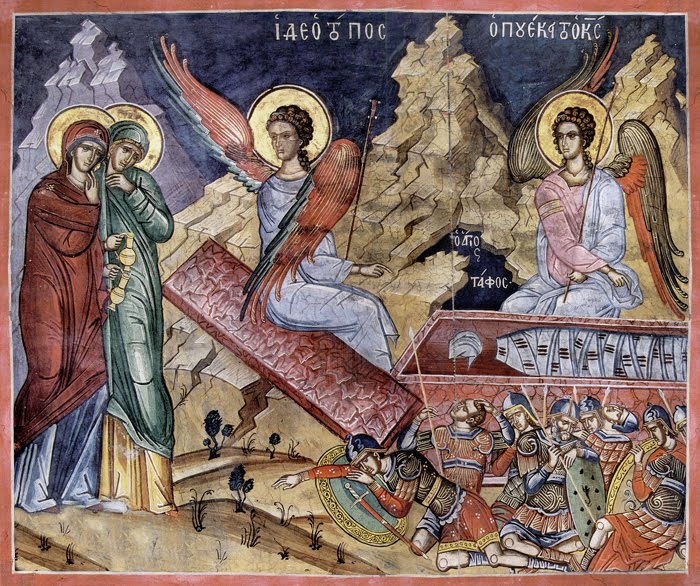
So what is it? Were there one or two angels in the tomb?
Here’s a more important question. Who cares?
We know who cares. Very often it’s people who are looking for reasons to reject the Gospel. To be charitable, perhaps it’s someone who become skeptical of the faith they grew up in during their “finding themselves” phase in college. Anything that smacks of “contradiction” or “inconsistency” is fuel to their the fire going on in their soul.
But at a minimum, this is most certainly what we can say about those who care. It’s people who apply a different standard of verification than what the Bible, obviously, has. What standard is that? It’s the standard of modern accuracy, or mathematical precision, or scientific veracity. As if the fact that there were 5001 people at the feeding of the 5,000 proves Christianity is all a lie or that the Bible has errors.
When I was younger, understanding the Christian faith almost became solely an exercise in apologetics, of proving to modern skeptics why the Bible is consistent and accurate in everything it says. Josh McDowell was helpful here, with his several books on the subject. He rightly deals with a lot of the supposed inconsistencies. Were there one or two angels? It’s a simple matter of two different accounts and what they’re focusing on. To say there is one angel is not to deny there were two angels.
Here’s the thing: no one really cared. Some time in the middle of all this, post-modernism crept in when truth itself is all a construct. “You have your truth and I have mine.” And logic itself was seen as a tool of a by-gone, patriarchal age. Who cares what logic says?
And now one has to wonder what value apologetics even has when the very paradigms of epistemology (the study of how we know things) has shifted.
How many angels were at the tomb is a question suitable to our modern era not unlike the way “How many angels can dance on a pin?” question was suitable to the Medieval scholastic age. Who knows what conundrums will confront future generations.
Here’s the bottom line: What we have in the Gospels is precisely what the Holy Spirit, through the apostolic writers, over time through a process of ecclesiastical self-authentication, intended to be in the Gospel. If one Gospel writer had two angels, and another had one, then that is what the Holy Spirit intended. And what of it? You either believe it or you don’t.
The argument I’m making is what’s called a heuristic. It’s an argumentative scaffolding intended to get us to a bigger point, at which point the scaffolding can be removed. Yes, of course, it’s important that the Bible doesn’t contradict itself or propagate blatant lies. And yes, it’s important that we find satisfying explanations for the seeming contradictions in Scripture, particularly in a time when many seek to undermine the Scripture with standards of veracity that may have no currency with ancient standards of veracity. Apologetics is necessary.
But at the end of the day, you either believe the revealed Word of God or you don’t. It comes down to faith.
And as far as that is concerned, let’s consider something. As Christians, we don’t found our faith on the veracity of Scripture. We found our faith on the resurrection of Jesus Christ. Proving the consistency of Scripture is a project we undertake lower on our list of priorities than several other projects, like proclaiming, “He is risen.”
“He is risen” is the cornerstone of the Christian faith. 500 witnesses saw the risen Christ. That’s your veracity right there. If the “consistency” of Scripture is an issue, it’s because a man, without a doubt, rose from the dead, and because He Himself had a respect for Scriptures, we are obligated to have that respect as well.
And one of those who witnessed the resurrected Christ, St. Paul, said all Scriptures are inspired by God. This all matters.
But if some detail of Scripture doesn’t match up with whatever are the current standards of veracity, that doesn’t disprove the fact that Christ is risen. Many witnesses were willing to undergo torture rather than give up their absolute certainty that Christ had risen from the dead. It’s a tested witness. And that is the cornerstone of our faith.
Were there one or two angels? Matthew and Mark say it was one angel. Luke and John say it was two. What of it? The Gospel writers were not journalists. They were evangelists. They were each proclaiming the Gospel as unique instruments of the Holy Spirit. That is how we should receive them. And whether it is reported it was “one angel” or “two angels,” faith simply says, “Amen.”